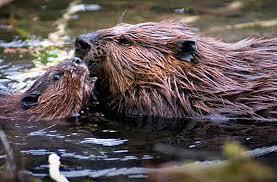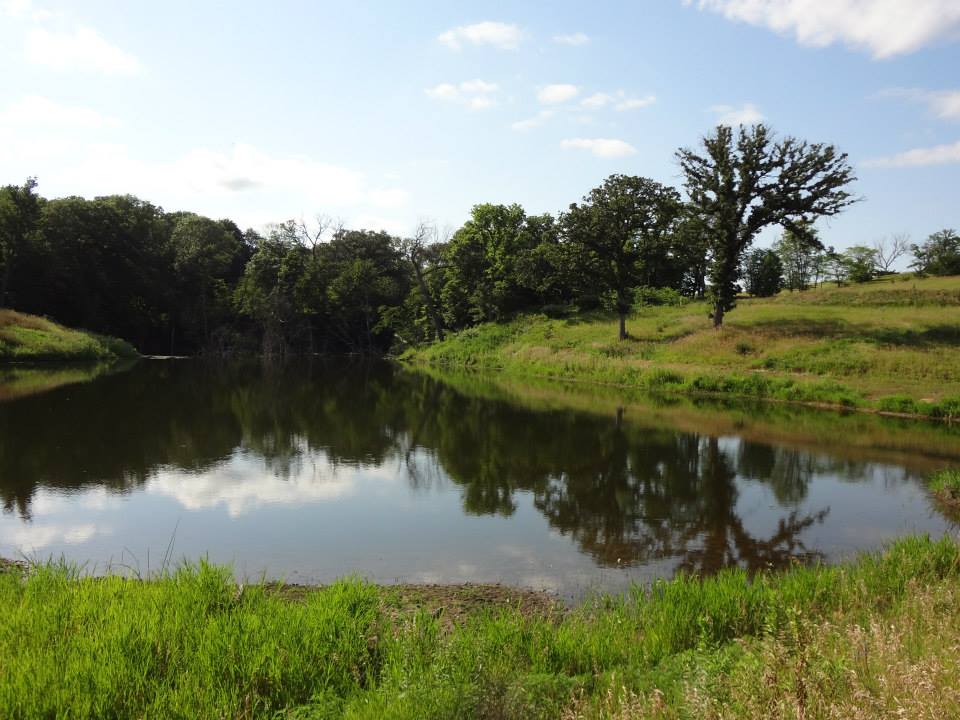There are quite a few cute, cuddly critters that roam around ponds and lakes that can often be quite destructive to the ecosystem. We all like to see wildlife while taking a stroll around the lake, but some animals are more desirable than others. Muskrats and beavers are two animals seen in pond and lake ecosystems that can have detrimental impacts on the health of your body of water. Keep reading to find out more about these pesky critters and how to prevent them from affecting your lake or pond.
Muskrats
Muskrats are sometimes referred to as aquatic rodents. Adult muskrats can grow up to about two feet long, weigh around 4 to 5 pounds. They have brown fur and a long, hairless black tail, which comprises about half of their body length. You can see them swimming on the surface of a water body like a little remote control boat with their tail used as a propeller. They prefer to feed on plants, so when there are plants around a lake or pond’s shoreline they often become a tasty snack for the neighborhood muskrats.
For their dwellings, muskrats burrow into a bank or build a “lodge” similar to a beaver. If they decide to burrow into the banks of a dam breast, they could eventually cause leaking or the collapse of areas along a shoreline. Once, the team at AEC encountered a muskrat that decided to build its lodge right on top of a fountain that was off for the season, which was quite the mess to clean up.
How to Prevent Muskrat Damage
Like other rodents, muskrats like to chew things. This is a big problem for any water body with a fountain. These pests love to chew on power cables for fountains and expose the wires to water, which is never good.
If you’re looking to get rid of these pesky critters, from your pond or lake you have a few options for pest control. The best preventative measures to get rid of muskrats in ponds and lakes include:
- Physically remove the muskrats by trapping and relocating them
- Bury wire mesh around the shoreline and cover it with rip rap to prevent the muskrats from burrowing
- Try to limit the amount of favorable vegetation that muskrats will feed on, such as:
- Arrowhead
- Cattails
- Water lilies
Beavers
Beavers, another waterbody pest, are much larger rodents that create much larger problems. An adult beaver can live as long as 24 years in the wild, reach three feet in length — not including their tail — and can weigh over 50 pounds.
Beavers eat trees, branches and leaves as part of their diet, as they are able to digest cellulose, and also sometimes eat aquatic plants in a waterbody.
You’ve probably seen pictures of trees that have been chewed down to a twig by beavers — it’s pretty impressive. However, when it affects your lake or pond, it’s not so cool. Beavers do massive damage to the trees and saplings around ponds and lakes. Our team at AEC has worked on sites where a single beaver took up residence and was able to completely decimate all of the trees around the shore to make a lodge or dam.
In a stormwater impoundment or pond, beavers build dams to prevent the water in an area from leaving. This quickly becomes a serious problem, as the water backs up and overflows the banks.
Similar to muskrats, beaver often also decide to chew or build dams on fountains. AEC has worked on fountains in which beavers ate large chunks out of the fountain float and bit through power cables.
How to Prevent Beaver Damage to Trees
Beavers usually cause the most problems for the trees on lake and pond shorelines when eating and creating dams. One of the best ways to protect your trees from beaver damage is to take preventative measures. You can prevent beavers from chewing trees by:
- Wrapping trees in wire
- Coating the tree with a mixture containing paint and sand
If a beaver becomes an extreme nuisance, you may need to trap it and relocate it to a location that is more suitable.
Contact AEC for Help Preventing Muskrat and Beaver Damage
We all want to live in harmony with the animals that inhabit our aquatic ecosystems, but sometimes there may be a few bumps in the road that we have to deal with.
Aquatic Environment Consultants can help you prevent damage caused by beavers or muskrats to your lake or pond. Contact us today for a consultation to talk about what we can do to preserve your beautiful pond or lake from pests.
Before and after photos from a client that hired AEC for water pest management:






Add Comment